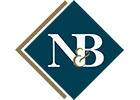01 Apr COVID Financial Resources Guide
In light of the tremendous consequences to business and individuals associated with the growth of the coronavirus COVID-19 (“Coronavirus”), Neider & Boucher, S.C. has recently published numerous materials which can easily be found on our website’s COVID Response Resource List. Because the lessons learned by some could be invaluable for others, we will continue to try to address and share those lessons with our clients and our community.
- SBA- CARES Act Loans Overview
New Relief for Businesses
The CARES Act, signed by the President on March 27, 2020, created new forgivable loans for small businesses to be used to cover expenses for payroll, rent, health benefits, retirement benefits, utilities, and other expenses, through a host of different programs.
The list of businesses eligible for these new loans is broad, and includes small businesses, nonprofits, veterans’ organizations, and trial businesses with fewer than 500 employees. It also includes sole-proprietors, independent contractors, and other self-employed individuals.
The loan is for up to $10,000,000, and the amount you qualify for is based on the average total monthly payroll costs the business incurred over the past year, excluding compensation for employees over $100,000, plus the amount of any EIDL loans made between January 31, 2020 and the day those loans may be refinanced under this program. For new businesses, the loan is 2.5 times the average total monthly payroll payments from January 1, 2020 to February 29, 2020, again excluding compensation for employees over $100,000, plus the amount of EIDL loans made between January 31, 2020 and the day those loans may be refinanced under this program.
What can these loans be used for?
These loans can be used for payroll expenses including salary, wages, commissions, paid leave (like vacation, family, medical and sick leave), health benefits costs, retirement benefits, state and local payroll taxes, up to $100,000 in one year prorated for the period of February 15 and June 30, 2020. It cannot be used for compensation for employees whose principal place of residence is not the United States, and cannot be used for wages for which credit is allowed under the Families First Act. See the Neider & Boucher summary of the Families First Act here.
The loans may also be used for rent and lease payments, utilities, and interest on debt incurred before February 15, 2020.
When do I have to pay the money back?
One of the most important parts of the CARES Act for small businesses is that large parts of the loans under the CARES Act are actually eligible for forgiveness.
Indebtedness is forgiven for the eight-week period after the beginning of the loan date for costs and payments made for payroll (as discussed above), interest payments on loans secured by a mortgage, rent, and utility payments. In addition, loans forgiven for these costs are excluded from gross income (and so are not taxable).
Caution: Some Strings Attached
The amount forgiven for the expenses discussed above will be reduced if the number of employees compared to the previous year is reduced, and also if the wages paid to employees are reduced by more than 25% of the previous year’s compensation. Employers who re-hire workers they previously laid off will not be penalized for having a reduced payroll at the beginning of the loan period, so if you had to lay off workers, it may be in your interest to bring them back as soon as possible.
Loan amounts that aren’t forgiven can have their maturity date extend up to 10 years from the date forgiveness is applied for, at a maximum annual interest rate of 4%, and there are no prepayment penalties.
In addition, because most businesses will have other loans and lines of credit outstanding, you should work with your bank and service providers to ensure that any existing loans that prevent you from taking out additional debt are properly addressed.
Application Details:
The SBA is currently working on application details, and we will update this page as more information becomes available. What we know now is that the loans will be available until June 30, 2020, and the borrower must certify (i) that the loan is needed to continue operations during the pandemic, (ii) that the funds will be used to retain workers and make the other payments listed above, (iii) the applicant doesn’t have any other applications pending for the same purpose, and that (iv) from February 15, 2020 to December 31, 2020 the applicant hasn’t received and won’t receive duplicative amounts from this program.
UPDATE: A sample application form can be found here.
Please contact Neider & Boucher if you have any questions about the loan process, your current loans, or the program in general.
- EIDL Loans Overview
Apply Now
As of 10:00 pm on Friday March 20, the counties in Wisconsin are eligible for Employer Injury Disaster Loans (“EIDL”) offered by the Small Business Administration (“SBA”). The first and most important thing to know about these loans is that the process can take 3-4 weeks from application to eventual approval and receipt of funds. All indications suggest that there will be a backlog of loan applications for EIDL loans. There is no obligation to take the funds if approved, so you should apply immediately, and decide later whether you wish to take the funds.
Uses of EIDL Loans.
The EIDL loan is unique in that the capital may only be used to help businesses with working capital constraints.
EIDL Loan Terms.
The loan terms for EIDL loans appear to be better than market loans. The current terms of EIDL loans as discussed by the SBA Wisconsin office are as follows:
- Interest Rate 3.75% applies to for-profit businesses
- Maximum Loan $2 Million
- Loan Term: Up to 30 years
- All loans currently come with an automatic 12-month deferral of payments.
- No prepayment penalties or restrictions
EIDL Loan Application Process and Required Documents
There are numerous documents and pieces of information about both you and your business that will be needed, so therefore, companies needing an immediate lifeline should gather and prepare the following as soon as possible if interested in this loan program:
- All corporate governance documents
- Articles of Incorporation
- Articles of Organization (for LLCs)
- Registration of Sole Proprietorships
- Employer Identification Numbers (EINs)
- Operating Agreements
- Bylaws
- A written statement explaining the nature and scope of the economic injury.
- This statement should be a simple narrative about how and why your business has been adversely impacted by the COVID-19 virus.
- Topics to briefly discuss include your loss of revenues, cancelled contracts, interrupted supply chains, and other events that results in economic injury (financial loss or lost opportunities) to your business.
- Current Accounts Payable and Accounts Receivable Aging as of the date you file for the loan
- Tax filings for the prior three (3) years for both the businesses and the owners of the business.
- For loan amounts under $500,000, the current year’s returns do not need to be provided
- Also must fill out IRS Form 4506-T, allowing the SBA to request transcripts of tax returns, allowing the SBA to work with the IRS to obtain tax information.
- Company fiscal year end Income Statements and Balance Sheets for the previous three (3) years, as well as latest year to date financial statements (company prepared as opposed to audited financial statements will be accepted).
- Company and Owner’s Debt Schedule Tables (including: lender, original loan amount, date, current balance, interest rate, collateral, purpose of loan, any guarantors, status as current or past due (with explanation if past due), for each loan) (SBA Form 2202)
- Personal financial statements from the company’s owners (SBA Form 413)
- Monthly two (2) years’ cash flow projections
- Monthly Sales History for three (3) years up to date of filing for loan. (SBA Form 1368)
- Current copies of credit reports for owners of company from the three (3) credit bureaus with explanations for negative reports.
- Sales Reporting for Past Three Years
- The SBA requires sales records for the past three years. If actual sales records have not been maintained, businesses may estimate their monthly sales. If estimates are being made, please use the letter “e” next to each estimated figure. Forecasted income and expenses until normal operations resume will also be requested.
Other EIDL Loan Program Information and Considerations
While EIDL loans have attractive terms, they are not free money. The SBA requires a personal guarantee for all loans. Qualification criteria such as credit scores and other requirements are not disclosed to the public, and are currently in flux as Congress takes steps to deal with the crisis. The following general guidelines are known and have been discussed by the Wisconsin branch of the SBA:
- Loans over $25,000 will be secured by some type of collateral pledge but loans will not be declined due to a lack of collateral;
- For loans over $25,000, the first $25,000 can be disbursed prior to confirmation/legal documentation securing the collateral for the loan, and the subsequent funds will follow after all agreements finalized; and
- Loans up to $500,000 will not require the current year’s tax returns (2019)
Be sure to select “Economic Injury” as the disaster when applying; there are other active disasters still available to select on the application website for Wisconsin, and misclassifying the disaster could delay or prevent your application. Also, the SBA cannot reset your password if you pause your application or otherwise get locked out; if you forget your application/login information, you will have to start over again. Keep all of your login and application information readily available to prevent this from happening.
Final Thoughts on EIDL
There is no application fee, and even if approved you can choose to take some, all, or none of the approved funds. Within six (6) months of approval, you can contact the SBA to request an increase in the loan. There is no reason not to apply and begin the process as soon as possible.
This article was authored by Attorney Eric Klemm, a graduate of the University of Wisconsin’s School of Law, practicing as part of Neider & Boucher, S.C.’s business team.
The guidance provided above is general in nature and readers are encouraged to reach out to Neider & Boucher, S.C., or to their own legal counsel to determine the applicability of these issues to their own personal and/or business needs.
This article was authored by Attorney Eric Klemm, a graduate of the University of Wisconsin’s School of Law, practicing as part of Neider & Boucher, S.C.’s business team.
The guidance provided above is general in nature and readers are encouraged to reach out to Neider & Boucher, S.C., or to their own legal counsel to determine the applicability of these issues to their own personal and/or business needs.


